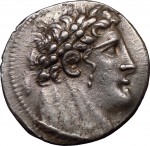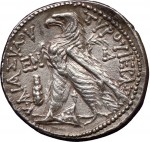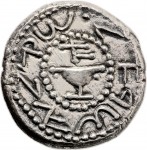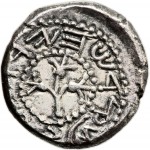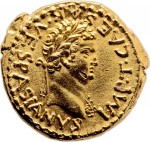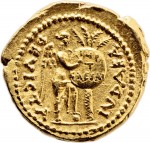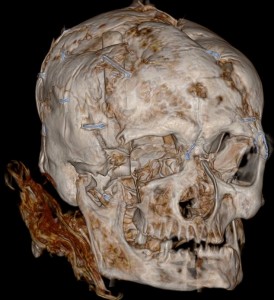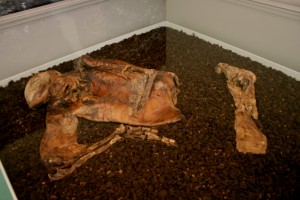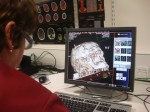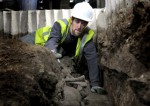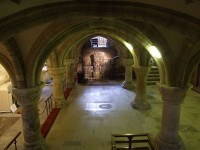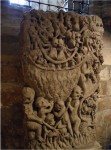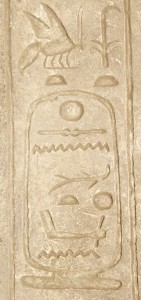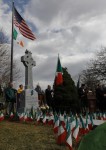 The remains of five Irish immigrants who died in 1832 during the construction of a stretch of the Philadelphia and Columbia Railroad were reinterred in the West Laurel Hill Cemetery in Bala Cynwyd, Pennsylvania on Friday, March 9th. Seven bagpipers in kilts played during the procession and accompanied an Irish tenor as he sang the national anthems of the United States and Ireland. Members of the 69th Pennsylvania Irish Brigade, a Civil War re-enactment group, fired Civil War muskets in a salute to the departed. Their burial plot is marked by a 10-foot-high Celtic cross made of County Kilkenny limestone and sculpted by Johnny Rowe in Stradball. It was paid for by Immaculata University. The plot was donated by the cemetery.
The remains of five Irish immigrants who died in 1832 during the construction of a stretch of the Philadelphia and Columbia Railroad were reinterred in the West Laurel Hill Cemetery in Bala Cynwyd, Pennsylvania on Friday, March 9th. Seven bagpipers in kilts played during the procession and accompanied an Irish tenor as he sang the national anthems of the United States and Ireland. Members of the 69th Pennsylvania Irish Brigade, a Civil War re-enactment group, fired Civil War muskets in a salute to the departed. Their burial plot is marked by a 10-foot-high Celtic cross made of County Kilkenny limestone and sculpted by Johnny Rowe in Stradball. It was paid for by Immaculata University. The plot was donated by the cemetery.
 Around 500 people were present to pay their respects, among them Kevin Conmy, deputy chief of mission at the Irish embassy in Washington, D.C., and the two men responsible for discovering the bodies, Immaculata University history professor William Watson and his twin brother, Francis, a Lutheran minister.
Around 500 people were present to pay their respects, among them Kevin Conmy, deputy chief of mission at the Irish embassy in Washington, D.C., and the two men responsible for discovering the bodies, Immaculata University history professor William Watson and his twin brother, Francis, a Lutheran minister.
The Watsons’ late grandfather, Joseph Tripican, was employed for many years as the assistant to Martin Clement, president of Pennsylvania Railroad during the 1940s. In 1909, the railroad assigned Clement to investigate a cholera outbreak that had devastated a shanty town of laborers working on Duffy’s Cut, a particularly gruesome section of rail 20 miles west of Philadelphia that required leveling a hill then filling the adjacent valley with the soil removed from the hilltop.
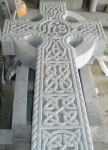 In 2002, the Watsons came across a file of documents about the 1909 investigation that their grandfather had taken home with him after the company went bankrupt in 1970. The file included press articles from 1832 which claimed that there was cholera at the railroad workers’ encampment, but only eight or nine fatalities. Clement’s investigation, on the other hand, put the number of dead at 57. Newspapers were usually very punctilious recording cholera deaths to help contain epidemics. The Watsons smelled coverup and though neither of them are archaeologists and only one of them is a professional historian, they decided to look for the bodies of these nameless, faceless workers who had died unmourned. They applied for grants and were soundly rejected, so they gathered volunteers and permits and paid their own way. Thus began the Duffy’s Cut Project.
In 2002, the Watsons came across a file of documents about the 1909 investigation that their grandfather had taken home with him after the company went bankrupt in 1970. The file included press articles from 1832 which claimed that there was cholera at the railroad workers’ encampment, but only eight or nine fatalities. Clement’s investigation, on the other hand, put the number of dead at 57. Newspapers were usually very punctilious recording cholera deaths to help contain epidemics. The Watsons smelled coverup and though neither of them are archaeologists and only one of them is a professional historian, they decided to look for the bodies of these nameless, faceless workers who had died unmourned. They applied for grants and were soundly rejected, so they gathered volunteers and permits and paid their own way. Thus began the Duffy’s Cut Project.
Duffy’s Cut was named after Philip Duffy, the Irishman contracted by the railroad in 1831 to make the cut. He had done this sort of project before, and he liked to go back to Ireland to enlist, as an 1829 newspaper story quoted him, “a sturdy looking band of the sons of Erin” to do the backbreaking labor of moving tons of clay, stones, shale, and soil from the top of a hill to the bottom of a valley. We don’t know if he went directly to Ireland to recruit for the Duffy’s Cut contract or if he hired newly arrived Irish workers, but the passenger manifest of the barque John Stamp which departed from Londonderry, Ireland en route to Philadelphia, Pennsylvania on June 23, 1832 lists one passenger, 18-year-old John Ruddy of Donegal, who almost certainly was among Duffy’s crew. He and 15 other laborers on that manifest never show up in later census records.
The workers lived in a hastily erected shanty town at Sugartown and King Roads in Chester County. Conditions were miserable and unsanitary, and cholera was winding its way through the Pennsylvania countryside. Just weeks after work began, people started to get sick. Instead of getting the medical care they asked for, the workers were quarantined in the valley. Some of them tried to escape the camp and seek help from neighboring houses, but they were rebuffed. By November, they were all dead.
 In August of 2004, the Watsons got permission from local property owners and the state to excavate along Duffy’s Cut. It was a needle in a haystack expedition on which they made little headway in the beginning. The next year railroad historian John Hankey helped them pinpoint the likely spot of the tent city. He was right — burned ground and a number of artifacts like pipes, fire rakes, construction tools and eating implements were found — but it wasn’t until March of 2009 after University of Pennsylvania geologist Tim Bechtel searched the embankment with ground-penetrating radar that they found their first human remains, the shin bone of an 18-year-old male.
In August of 2004, the Watsons got permission from local property owners and the state to excavate along Duffy’s Cut. It was a needle in a haystack expedition on which they made little headway in the beginning. The next year railroad historian John Hankey helped them pinpoint the likely spot of the tent city. He was right — burned ground and a number of artifacts like pipes, fire rakes, construction tools and eating implements were found — but it wasn’t until March of 2009 after University of Pennsylvania geologist Tim Bechtel searched the embankment with ground-penetrating radar that they found their first human remains, the shin bone of an 18-year-old male.
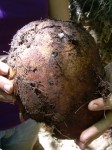 Over the next year, they unearthed the remains of five more people (some accounts, including my own, say six, but I now think that’s a mistake), four men and one woman. Osteological analysis suggests the woman was a laundress. Her neck vertebrae are worn from years of leaning over. All of the remains show signs of violence. The woman’s skull has puncture wounds on top, one of the other skulls has a bullet hole, and the others have wounds that were inflicted by a heavy sharp instrument like an axe or a pick.
Over the next year, they unearthed the remains of five more people (some accounts, including my own, say six, but I now think that’s a mistake), four men and one woman. Osteological analysis suggests the woman was a laundress. Her neck vertebrae are worn from years of leaning over. All of the remains show signs of violence. The woman’s skull has puncture wounds on top, one of the other skulls has a bullet hole, and the others have wounds that were inflicted by a heavy sharp instrument like an axe or a pick.
What they suspect happened is that the violence was inflicted on people trying to get away. It could have had an anti-Irish, anti-immigrant flavor, or could have been a panic reaction to the prospect of cholera spreading. It could have been all business. The railroad had private security policing the area, and the men of the East Whiteland Horse Company were basically vigilantes used to beating up horse thieves. Anybody trying to break quarantine would have been tracked down by East Whiteland Horse Company thugs and killed, then the bodies returned to the encampment to teach any would-be escapees a lesson.
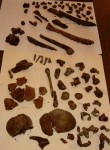 The afflicted were being tended by nuns from the Sisters of Charity and one local blacksmith who was in charge of corpse disposal. The blacksmith buried the first bodies in individual coffins but gave up on that once cholera started to claim more than he could keep up with. That’s why the Watsons found a small number of remains in one location, while the cholera victims were buried in a mass grave 30 feet below a memorial monument to the unnamed rail workers who built our country erected on the spot in 1870. Once the bodies were buried, the blacksmith burned the encampment to the ground.
The afflicted were being tended by nuns from the Sisters of Charity and one local blacksmith who was in charge of corpse disposal. The blacksmith buried the first bodies in individual coffins but gave up on that once cholera started to claim more than he could keep up with. That’s why the Watsons found a small number of remains in one location, while the cholera victims were buried in a mass grave 30 feet below a memorial monument to the unnamed rail workers who built our country erected on the spot in 1870. Once the bodies were buried, the blacksmith burned the encampment to the ground.
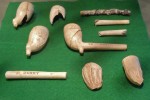 Only one of the sets of remains provided a clue to the identity of the deceased. Forensic dentist Dr. Matt Patterson found a rare genetic anomaly in the teeth of the 18-year-old male who was the first body discovered: the youth never developed an upper right first molar. As it happens, a number of people named Ruddy in Ireland today also never developed their upper right first molars. Some of them even know of a family legend about a young Ruddy moving to the US in the 1830s to work on the railroad who was never heard from again.
Only one of the sets of remains provided a clue to the identity of the deceased. Forensic dentist Dr. Matt Patterson found a rare genetic anomaly in the teeth of the 18-year-old male who was the first body discovered: the youth never developed an upper right first molar. As it happens, a number of people named Ruddy in Ireland today also never developed their upper right first molars. Some of them even know of a family legend about a young Ruddy moving to the US in the 1830s to work on the railroad who was never heard from again.
One William Ruddy of Donegal flew to Pennsylvania when he read the story in the Irish press. He has no upper right first molar. Two of his aunts have no upper right first molar. He gave a DNA sample to compare against the remains. The analysis has not been completed yet, but assuming it turns out to be a match — which everyone involved is sure it will — the remains of John Ruddy will be returned to Ireland for burial in the family plot.
Unfortunately the project ends here. The brothers would like to excavate the probable location of the mass grave, but Amtrak owns the property and they will not give the Watson brothers permission to excavate because the location is too close to the active train tracks.
For footage of the burial and some lovely piping, see this local news story:
Keep your eyes open for an upcoming documentary on the Duffy’s Cut tragedy, Death on the Railroad, coming in June 2012.
